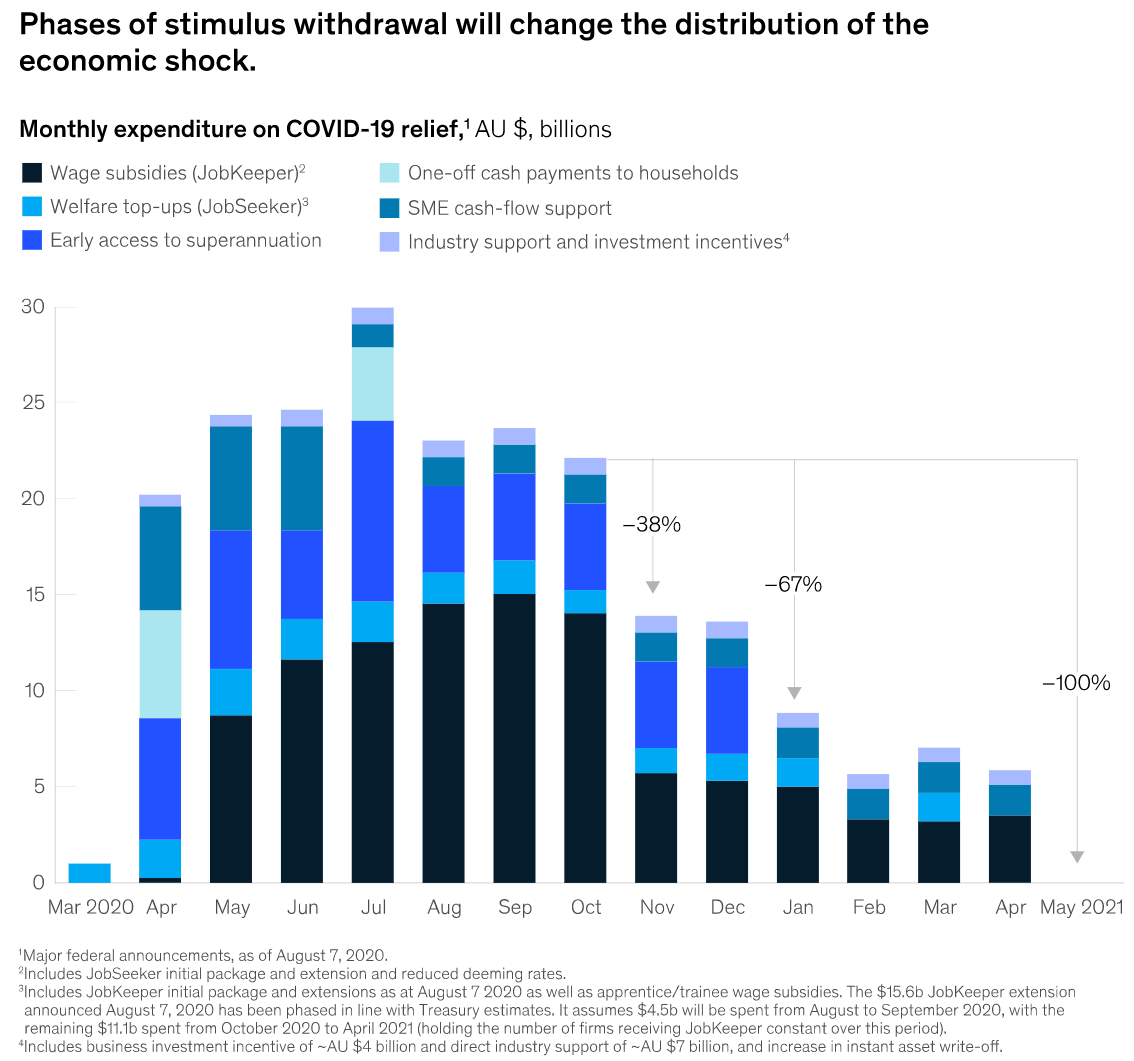The number of businesses going into administration in locked-down Victoria rose by 23.8 per cent, although there was a 1.6 per cent decline in business administrations in New South Wales.
CreditorWatch’s chief economist Harley Dale says there is some correlation between the increase in business administrations and the recent reduction in government support measures such as JobKeeper wage subsidy:
Analysis from credit reporting agency CreditorWatch found the number of firms entering administration rose by 11 per cent in September to 436.
And the number of business defaults increased by 23 per cent – the first time the metric has risen since May.
Despite the uplift, the number of businesses in administration is still 48 per cent lower than last year (833) – a peculiarity that can be traced back to a government-enforced moratorium on insolvent trading.
But the experience differs from state to state.
Both Victoria (23.8 per cent rise) and Queensland (24.1 per cent rise) recorded near-identical increases in business administrations following substantial decreases over August.
But NSW posted a 1.6 per cent fall in administrations in September, despite also recording a 34.3 per cent decrease in August.
CreditorWatch chief economist Harley Dale told The New Daily there’s “some correlation” between the rise in business administrations and the cuts to wage subsidies, with family-run businesses deciding to cut their losses now payments have been cut by $300 a fortnight.
But he said JobKeeper was still hiding the extent of economic damage caused by coronavirus lockdowns.
“I think the next six months are crucial as we continue to see a wind back of stimulus payments and we slowly assess how many businesses come out of that and how many don’t,” Mr Dale said.
The data comes two weeks after JobKeeper was cut from $1500 a fortnight to $1200 a fortnight for full-time workers and from $1500 to $750 for part-time workers…
According to analysis compiled by Deloitte Access Economics, 240,000 businesses could fail due to the economic fallout of the coronavirus, which is a 3000 per cent increase on pre-pandemic years…
“The biggest challenge for the Australian economy is uncertainty around the inevitable fact that – at some point – we’re going to see an increase in insolvencies and maybe it will be a substantial increase you could appropriately call a tsunami,” Mr Dale said.
“It’s a terrible tale to tell and you don’t want to talk about it.”
Insolvencies are likely to surge as:
- Emergency income support is unwound;
- Mortgage and rent repayment holidays are unwound over a similar timeframe; and
- Australians can no longer withdraw their superannuation early (or have exhausted their funds), with the expiry date on early withdrawals set at 31 December 2020.
The next chart from McKinsey tells the tale, with monthly expenditure on COVID-19 relief to fall by 38% next month (delayed impact of the recent JobKeeper cut), then by a further 29% in January, followed by a permanent withdrawal of support by May next year:
This mean that income support will fall from around $18 billion a month (10.7% of monthly GDP) in the first six months of the crisis to zero mid next year.
In other words, this is the calm before the insolvency storm. The economic pain has been delayed, not prevented.


